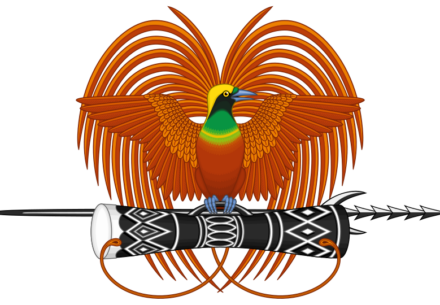CLIMATE OF PAPUA NEW GUINEA
- Climate of PNG
- Constitutional Framework
- Cultural Events
- Cultural Institution
- Cultural Life
- Daily Life and Social Customs
- Decolonization
- Demographic-Trends
- Finance
- Education
- Economy
- Drainage-Soil
- History
- Health-Welfare
- Housing
- Justice
- Land
- Labour-Taxation
- Local-Government
- Media-Publication
- Manufacturing
- National Anthem and Pledge
- National Politics in the 1990s
- PNG History
- People – Ethnic Groups
- Plant and Animal
- PNG Public Holidays
- Political Process
- Postcolonial Politics
- Regional Relations
- Relief
- Religion
- Services
- Settlement Patterns
- Sports and Recreation
- Trade
- Transportation &telecommunications
Although all the climatic regions of Papua New Guinea are basically tropical, they are nevertheless varied. In the lowlands, mean annual maximum temperatures range from about 86 to 90 °F (30 to 32 °C), and the minimums are between 73 and 75 °F (23 and 24 °C).
Seasonal variation in temperature is slight, and the daily variation approximates the annual variation. Cooler conditions prevail in the Highlands, where night frosts are common above 7,000 feet (2,100 metres); daytime temperatures there generally exceed 72 °F (22 °C) regardless of season. Each variation in elevation creates new ecological zones for plant and animal life.
Rainfall, rather than temperature, is the determinant of season. Precipitation is dependent on two wind systems—the southeast trade winds and the northwesterly turbulence zone (the monsoon)—and on the three site characteristics of latitude, elevation, and exposure. The southeasterlies blow for approximately seven months (May to November) on the extreme southeast of the country (Milne Bay) and for gradually shorter periods in northern areas, predominating for only three months in the Admiralty Islands.
Conversely, northwesterlies are more common on the north coast and in the Bismarck Archipelago, but they affect Port Moresby for only three to four months of the year (the rainy season, December through March).
The Highlands seem to have their own airflow systems, receiving rain throughout the year—totaling between 100 and 160 inches (2,500 and 4,000 mm)—except for a midyear dry phase. With the northwesterlies, rain is frequently from heated saturated air that loses its moisture as it cools and rises (convectional storms), and rain shadow effects are reduced. With the southeasterlies, however, exposure is particularly important.
The Port Moresby coastal area is parched throughout the period of the southeasterlies, which flow parallel to the coast, yet where mountainous land lies athwart the airflow, as in New Britain or the southward-facing slopes of the Highlands, rainfall is extremely heavy, frequently exceeding 300 inches (7,600 mm).
Port Moresby receives less than 50 inches (1,300 mm) of precipitation annually, which affects the water supply and the generation of hydroelectric power.

Postal Address:
Department of Foreign Affairs
P.O Box 422, Waigani.
National Capital District (NCD)
Papua New Guinea (PNG)
- Central Government Office, Kumul Avenue, Waigani, N.C.D
- inquiries@dfa.gov.pg
- +675 301 4100
External Links
- Goverment Departments and Agencies
- Department of Prime Minister and National Executive Council
- Department of Planning & Monitoring
- Department of Treasury
- Department of Finance
- Department of Personnel Management
- Department of Justice & Attorney General
- National Parliament of Papua New Guinea
- Immigration and Citizenship Services Authority
- Papua New Guinea Tourism Authority
- Investment Promotion Authority
- Kumul Consolidated Holdings
Subscribe to Our Newsletter to get Important News, Amazing alerts & Inside Scoops:




